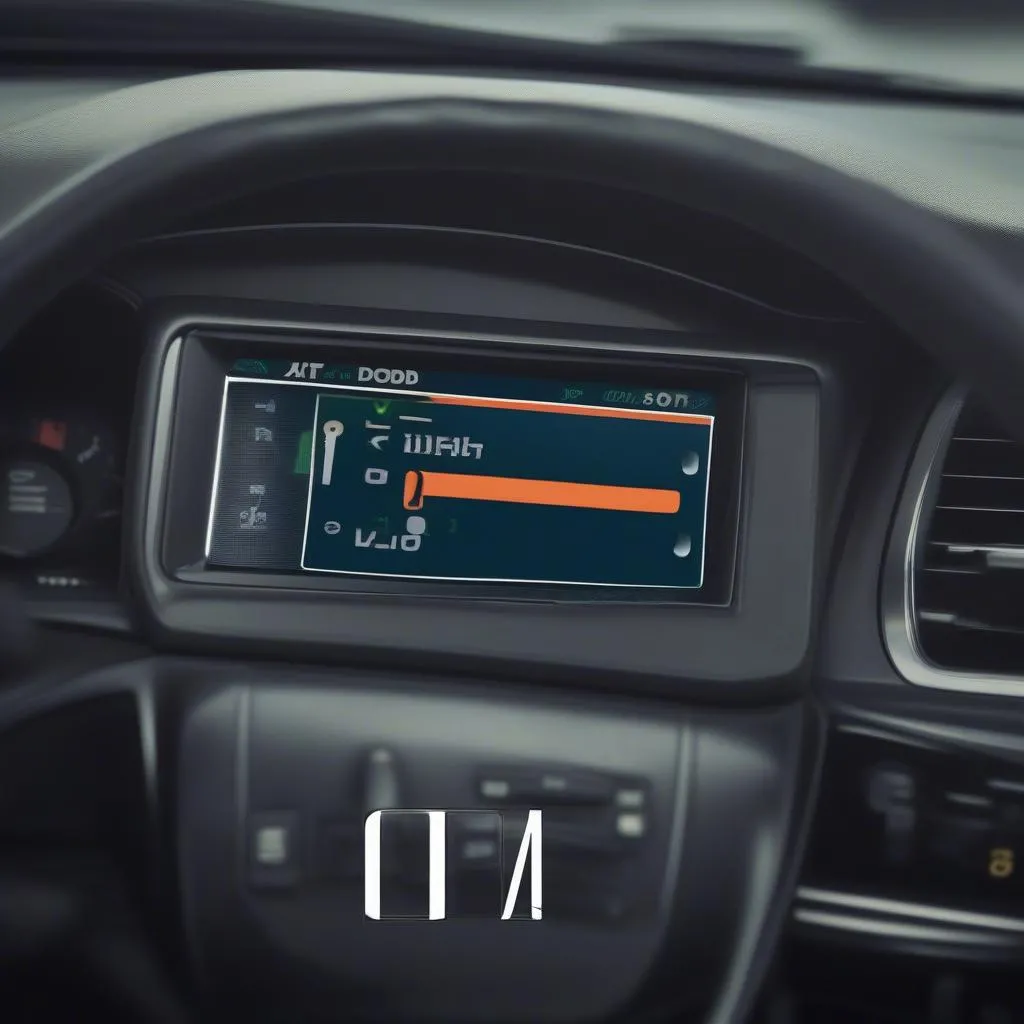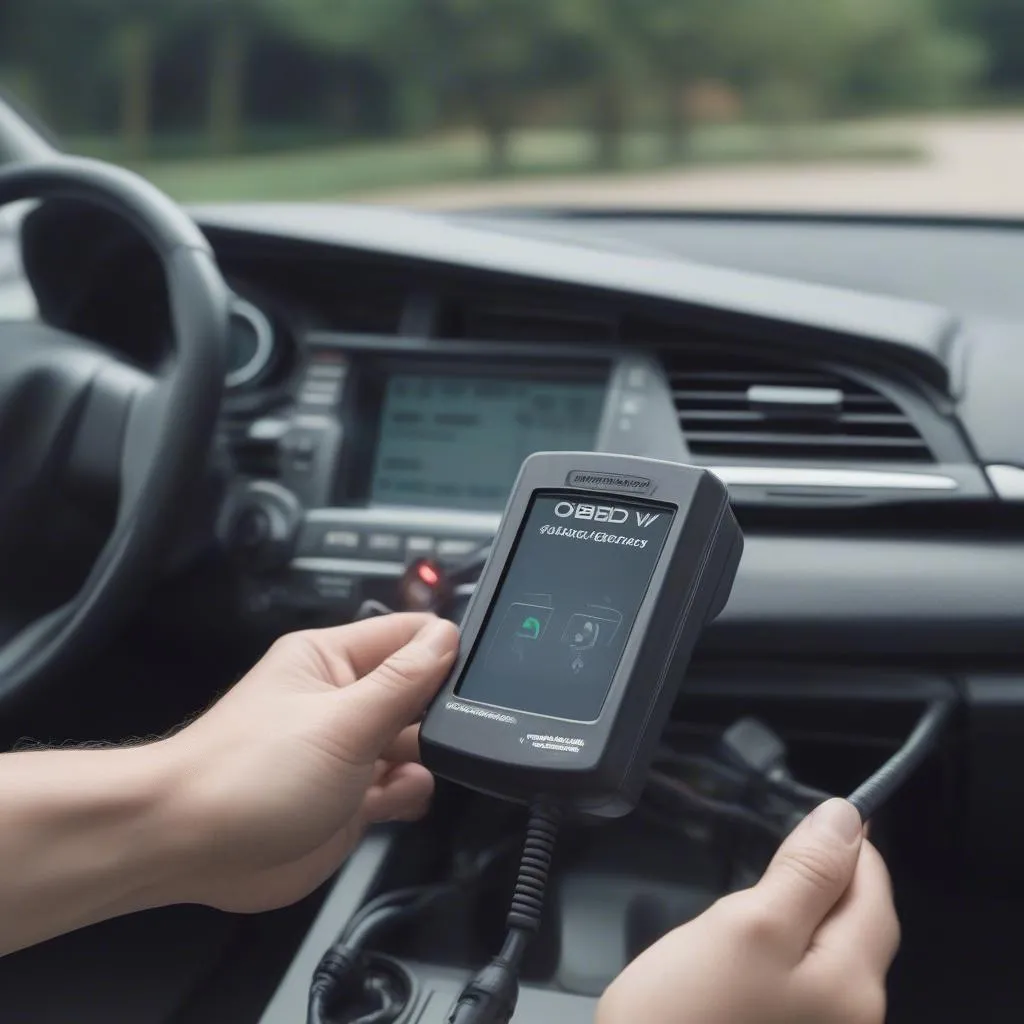Have you ever been stuck on the side of the road, wondering why your Honda Civic won’t start? Or maybe you’re a DIY enthusiast who wants to check your car’s engine codes and clear them yourself. Whatever your reason, you’ll need to find the OBD port, which is the gateway to your car’s diagnostics system. But where exactly is it located on a Honda Civic? Let’s find out.
The Importance of Finding the OBD Port
The OBD (On-Board Diagnostics) port is a standard connector on most modern cars. It’s a critical tool for mechanics and car owners alike. Think of it as the car’s black box, holding valuable information about its health and performance. Here’s why it’s so important:
- Diagnosing Engine Problems: When your Honda Civic throws a check engine light, mechanics use the OBD port to retrieve error codes that indicate what’s wrong. This helps them diagnose and repair the issue efficiently.
- Car Tuning and Modification: Enthusiasts use OBD ports to fine-tune their car’s performance. They can access data like engine RPM, throttle position, and oxygen sensor readings to optimize their vehicle’s setup.
- Environmental Regulations: Governments use OBD ports to ensure cars meet emissions standards. They can check for any discrepancies or issues that might cause excess pollution.
Where is the OBD Port Located on a Honda Civic?
Finding the OBD port on your Honda Civic is actually quite easy. It’s typically located under the dashboard, near the steering column. You’ll find a small rectangular port with 16 pins, often covered by a plastic flap. It’s usually labelled with “OBD” or “OBD II” on the surrounding area.
Here are some tips for finding the OBD port:
- Look under the dashboard: The most common location for the OBD port is on the driver’s side, under the dashboard.
- Feel around the steering column: It’s often located near the steering column, within easy reach of the driver.
- Look for a plastic flap: The port is usually covered by a small plastic flap.
The exact location can vary slightly depending on the year and model of your Honda Civic. For instance, the 2006 Honda Civic’s OBD port is situated differently compared to a 1997 Honda Civic. If you’re unsure, you can check your owner’s manual or consult a Honda dealership.
Example: Let’s say you own a 2006 Honda Civic. You’re getting a check engine light and need to find the OBD port to connect a scanner. You can consult your owner’s manual, which should detail the exact location for your specific model.
What to Do Once You Find the OBD Port
Once you’ve located the OBD port, you can connect a diagnostic tool like a code reader or a scanner. These devices communicate with your Honda Civic’s computer system, allowing you to retrieve error codes, read live data, and even reset the check engine light.
Here are some common tasks you can perform using an OBD scanner:
- Read and clear engine codes: Get insights into potential engine issues and reset the check engine light after repairs.
- Monitor live data: View real-time information like engine RPM, speed, coolant temperature, and more.
- Perform advanced diagnostics: Check for specific sensor readings, troubleshoot electrical problems, and analyze fuel efficiency data.
If you’re unsure about using an OBD scanner or performing any diagnostics yourself, it’s always best to consult a qualified mechanic.
Common OBD Port Questions:
Q: Can I use any OBD scanner for my Honda Civic?
A: While most OBD scanners work with modern vehicles, there are certain scanners specifically designed for certain makes and models.
Q: What happens if I disconnect the OBD port?
A: Disconnecting the OBD port won’t cause immediate damage to your car, but it will prevent communication between the diagnostic tool and your vehicle’s computer system.
Q: What are some common problems with the OBD port?
A: The most common problem is a loose or damaged connection. The port itself can get damaged from repeated use or exposure to harsh elements.
Q: Where can I get an OBD scanner?
A: OBD scanners are readily available at auto parts stores, online retailers, and even some dealerships. You can find them from reputable brands like FIXD, Bluedriver, and others.
Q: How do I know if the OBD port is working?
A: Connect a code reader or scanner to the OBD port. If the tool detects your vehicle and displays information, then the port is working correctly.
Q: What if I can’t find the OBD port on my Honda Civic?
A: If you can’t find the OBD port, it might be located in a hidden or less accessible location. Refer to your owner’s manual or contact a Honda dealership for assistance.
Q: Can I use the OBD port to access other systems besides the engine?
A: The OBD port is primarily used for engine diagnostics, but some scanners can access other systems like the transmission, ABS, and airbags, depending on your vehicle’s model and year.
Want to Learn More About OBD Ports?
If you’re interested in learning more about OBD ports, there are many resources available online. Check out these articles on Tech Car USA:
- Honda Civic 2006 OBD Port Location
- 1999 Honda Civic OBD Port
- 1997 Honda Civic OBD Port Location
- 1995 Honda Civic OBD Port Location
You can also visit the official Honda website or consult a trusted mechanic for more information.
 OBD Port Location
OBD Port Location
 OBD Scanner
OBD Scanner
Conclusion
Finding the OBD port on your Honda Civic is a simple process that can save you time and money when diagnosing potential engine problems. Remember, the port is typically located under the dashboard near the steering column. If you’re unsure, consult your owner’s manual or reach out to a Honda dealership for assistance.
For any further inquiries about OBD ports, diagnostics, or any car-related issues, don’t hesitate to contact our team. We’re here to help you keep your Honda Civic running smoothly.
Whatsapp: +84767531508